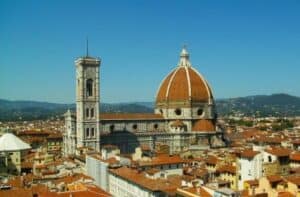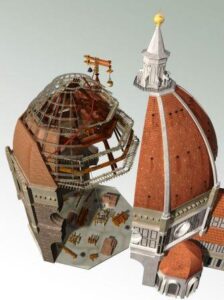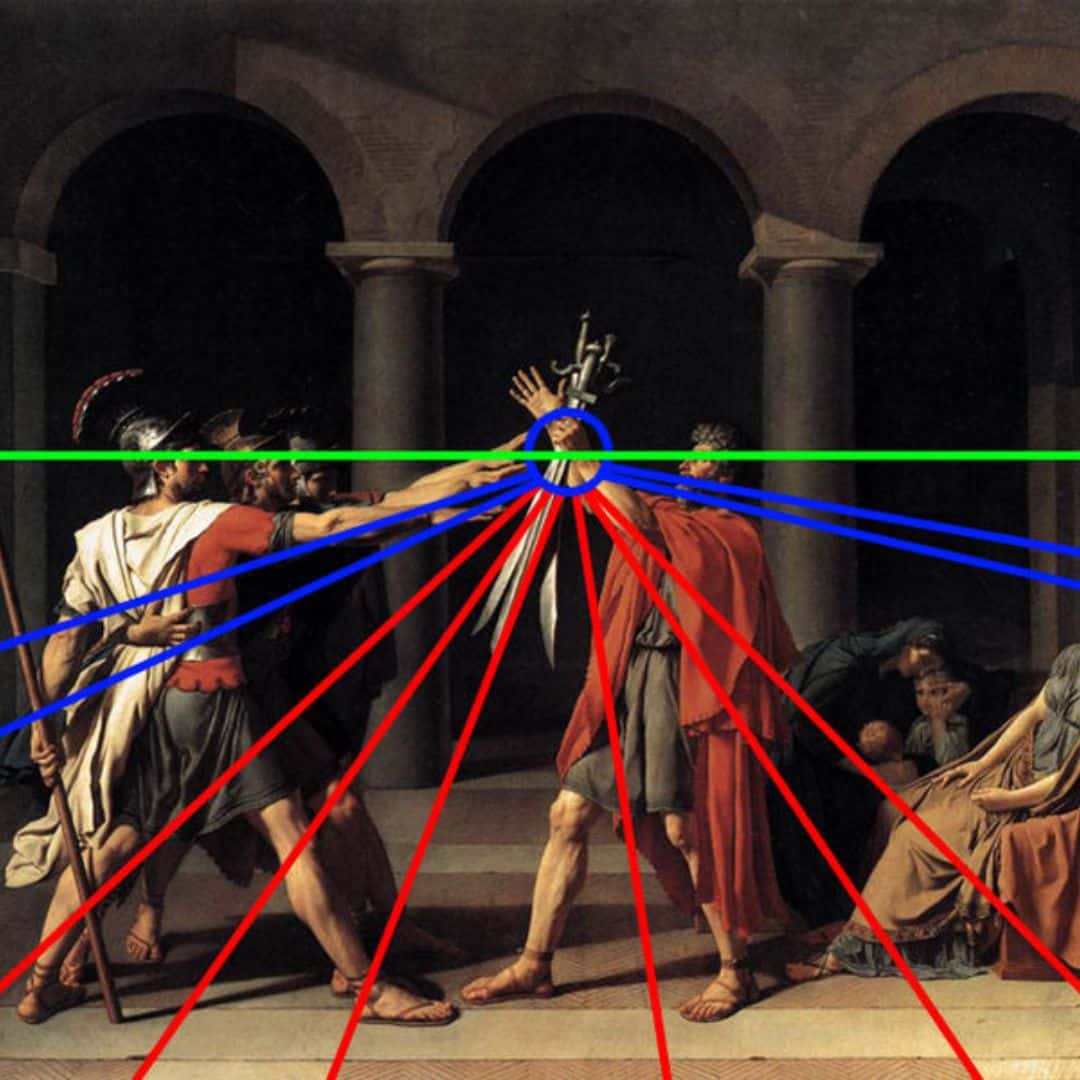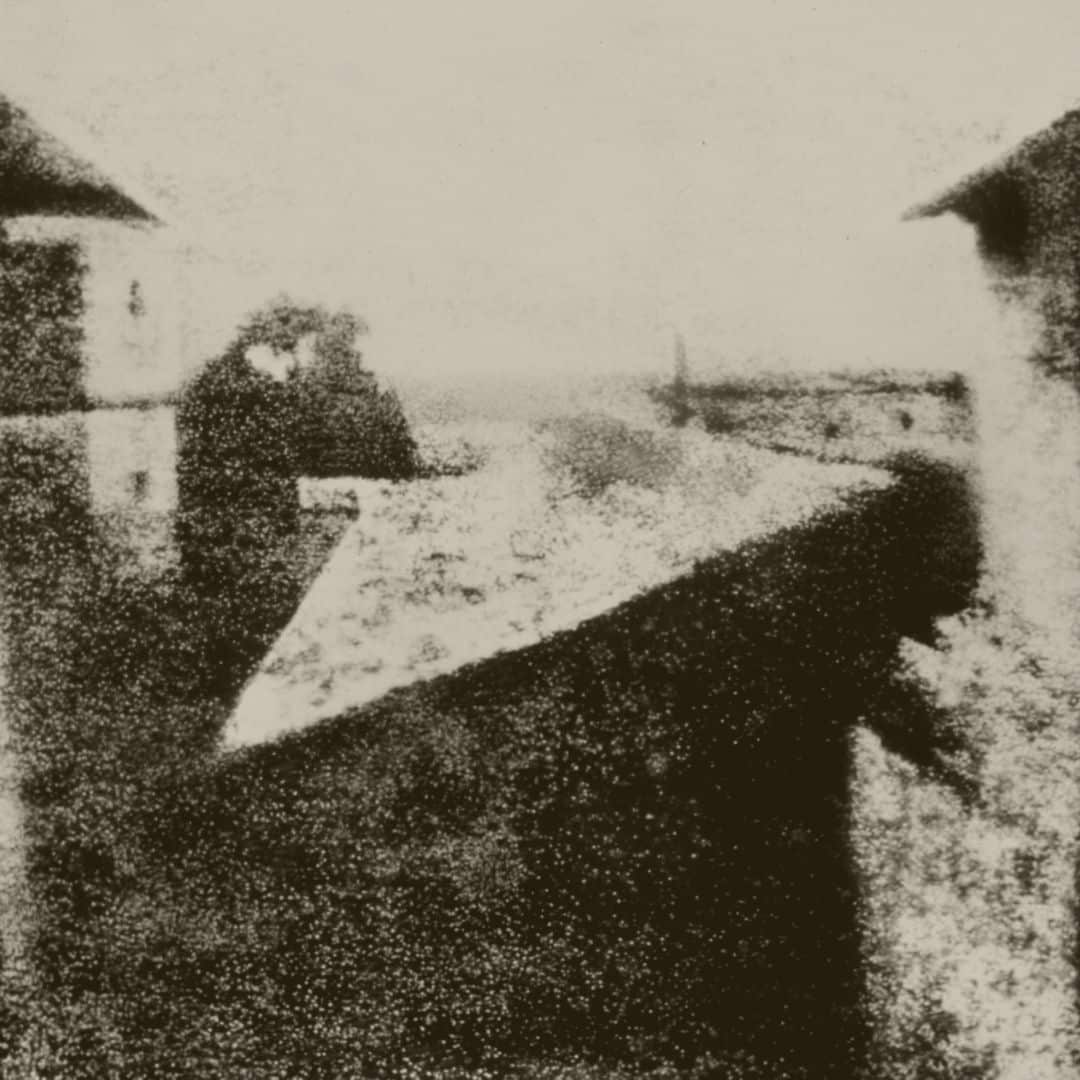The Duomo Florence | Brunelleschi
The Duomo Florence – Dome of the Florence Cathedral – is an architectural achievement. Something considered impossible and that nobody dared to do.
Until Filippo Brunelleschi, a modest goldsmith, tried to defy the laws of gravity and with an inventive spirit and a lot of patience managed to finish the works of the cathedral.
Text: Diana Ferreira | Author of several online courses on Art History and Cultural Tourism.

The Duomo Florence – Brunelleschi’s project
In 1418 the cathedral was almost finished, but a huge forty-five foot hole remained to be covered, over an octagonal drum on which a dome should be built.
An ambitious project by Arnolfo di Cambio that was left for last because of its great difficulties.
On this date a contest was opened in an attempt to find a solution to the problem, in which Brunelleschi and Ghiberti participated, the former being chosen and further igniting the rivalry between these two artists.
The prize was 200 gold florins to the winner and the possibility that his name would become part of architectural history.
Until 1420 Brunelleschi worked on his project, based on his self-taught studies of classical monuments in Rome, where he spent six years studying, measuring and drawing them.
It was in that same year that he began the construction of a very hard work that lasted until 1436, with the collaboration of the sculptors Donatello and Nanni di Banco.
Before, no one had dared to do it because of the enormous gap it had to cover and the danger of collapse.
To this day his methods at The Duomo Florence have not been fully unraveled and his work remains a mystery and is still being investigated.
The Duomo Florence – the problems
 For this project several problems were arising!
For this project several problems were arising!
The obvious and main one was to cover such a large octagonal space without collapsing under the weight.
It was also necessary to solve the issue of hoisting the very heavy materials and not having scaffolding resting on the ground, which were impossible to build for such dimensions due to the amount of wood needed.
In addition to these major technical problems, Filippo Brunelleschi had to deal with the incredulity of others in his abilities.
The citizens’ preference for other artists for the task and the envy of other intriguing craftsmen, who considered him crazy, laughed at his solutions and made his job even more difficult.
The Duomo Florence – Brunelleschi’s Solutions
Brunelleschi’s solution for the the Duomo Florence was to use two hulls, which were self-supporting and exerted pressure on each other.
A robust lower one made of brick laid in herringbone form (opus piccatum) that guaranteed stability, and that can be seen inside the cathedral, and an outer one, lighter and larger.
For the scaffolding, floating structures were attached to the drum.
Four million bricks, a material chosen because it was less heavy and more advantageous for the work, were used in a 37,000-ton roof.
Between the two walls of the dome, 2 meters apart and with different thicknesses, were the stairs with 463 steps for the workers.

Today they are climbed by tourists to admire the work and the impressive view of the city and the surrounding countryside.
Inspired by the Pantheon in Rome, Brunelleschi built a dome 91 meters high and 45 meters wide, slightly ogival so as not to clash with the Gothic aesthetic of the building.
with the Gothic aesthetic of the building.
He used eight exterior marble ribs, which harmoniously divide the roof and make it graceful with its contrasting bicolor between the white of the marble and the orange of the tiles.
He also reinforced the walls with hidden rings of iron, stone and wood, similar to the arches of the barrels.
To solve some of his problems, the architect and inventor of one of the first alarm clocks in history applied his mechanical knowledge here.
He created a complex lifting mechanism with three speeds, driven by an ox-joint that rotated a wooden shaft.
It had a revolutionary system capable of reversing direction without the oxen changing direction.
Brunelleschi also designed a sophisticated crane about 20 meters high, to move heavy materials laterally. Very sophisticated devices for the time and created by a brilliant mind.
The Duomo Florence – a remarkable achievement in the history of architecture
In the end the cupolone, as the Florentines call it, was a much lighter structure than a compact vault.
This so far unachievable feat marked the beginning of Renaissance architecture and was only technically surpassed about a century and a half later by Michelangelo’s dome in St. Peter’s Basilica in the Vatican.










